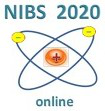Speaker
Description
ROBIN [1] is a single RF driver based negative ion test bed currently in operation at IPR, Gandhinagar, India. To understand and have deeper insights of physical phenomenon, several diagnostics have been interfaced with ROBIN system.
To quantify the negative ion density in ROBIN source, laser photo detachment (LPD) diagnostic is configured. LPD at ROBIN is based on single high power Nd:YAG laser which has a pulse width of 3 ns and repetition rate of 20 Hz. Successful integration of LPD needs control on laser energy, precise triggering and detection of weak signals. Precise triggering has two aspects. One is to control laser energy via delay between Flash lamp and Q switch pulses and second is to trigger it in phase with 1 MHz RF signal. This required a triggering system which can work with accuracy of few nano seconds.
A triggering and synchronization system (TSS) based on a custom FPGA (Field Programmable Gate Array) is designed and integrated in order to assure reliable and synchronized operation of the laser. Precise delay between laser pulses is necessary to obtain appropriate laser energy and to prevent the active medium, the Nd:YAG rod from thermal damage. In order to synchronize laser operation with 1 MHz RF, Rogowskii coil based peak detection is used and interfaced with TSS. The LPD setup is HV referenced; hence the interfaces were designed with optical isolation.
Another challenge is to detect weak signal from LPD probe. For this a custom low noise pre amplifier circuit is designed to measure signal in range of 1-2 mA in presence of large RF noise. The engineering solution designed for LPD interface contains mix of analog and digital systems. The TSS is based on low cost FPGA platform with custom analog based interfaces. The unit has been integrated without using any specific commercial system for the desired goal.
This paper presents the details regarding the design of interfacing electronics of LPD with some test results. In addition, the FPGA firmware, the control software and signal acquisition process are presented.
References:
[1] K Pandya et. al., “First results from negative ion beam extraction in ROBIN in surface mode”, AIP Conference proceedings 1869 (2017), p. 030009
[2] J. Soni, et al., ” Conceptual design, implementation and commissioning of data acquisition and control system for negative ion source at IPR”AIP Conference Proceedings, 1390 (2011), pp. 624-633
Summary
The abstract describes the electronics developed for integration of LPD diagnostic in ROBIN.

